Project 3: Making a message box
A wooden box that responds to user response and lights up accordingly
In this project we explored the woodwork shop(my favorite place in Fimbel) where we go to experience working with Wood for the first time in our class. The project involved creating a message box of wood and CPX responds to user response accordingly.
Materials:
- 1x large rectangle-shaped plank
- Saw
- 2-3 clipers(for holding the wood in plank)
- Drill machine
- Sanding machine(for curving and smoothening out)
- Screw driver
- Drill machine
- paper
- 4x black screw
- 2 nut and screw
Procedure:
- Getting the planks ready:
1.On one side of the wooden plank, we will measure the main square where the 4 pillar will stand and mark that accordingly.
2.After marking the wood and placing it tightly in the table using clipers, we will use a saw to the piece of wood and separate that piece from the main plank. Here’s some pictures of me doing this:
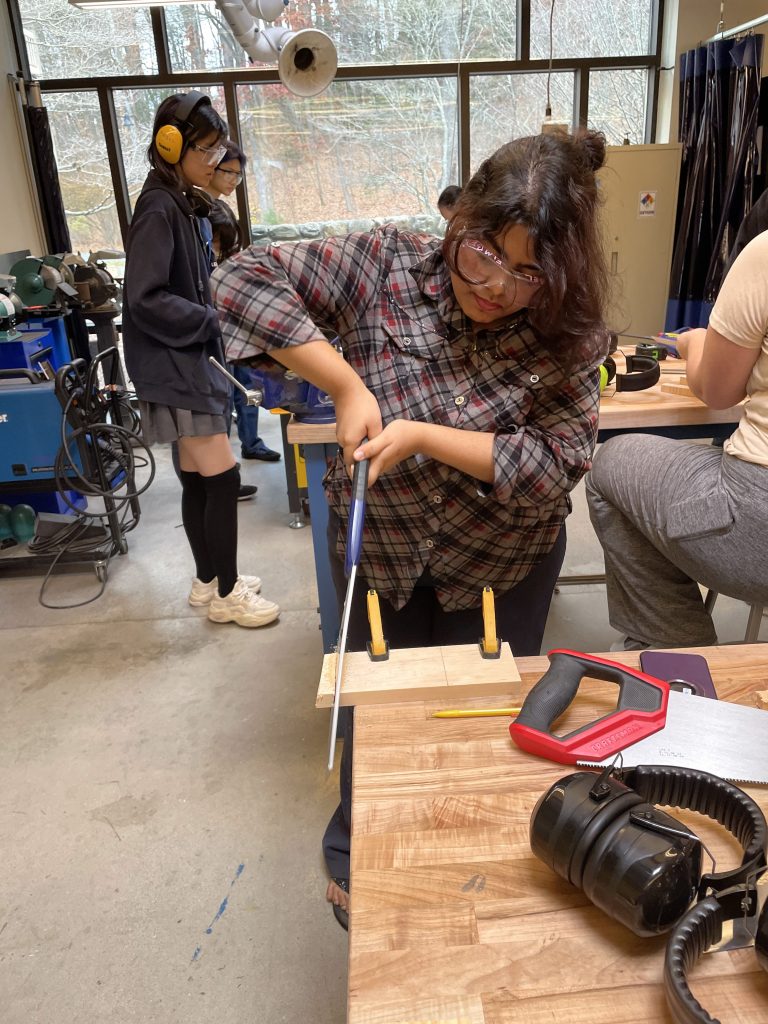
3.After having the ground plank, we will move on to separating 4 small pillar like wood stick which we will place at 4 corner of the square ground. After we separate 4 planks, we will use the sanding machine to curve the wood pieces and smooth it out by giving it a more even shape.
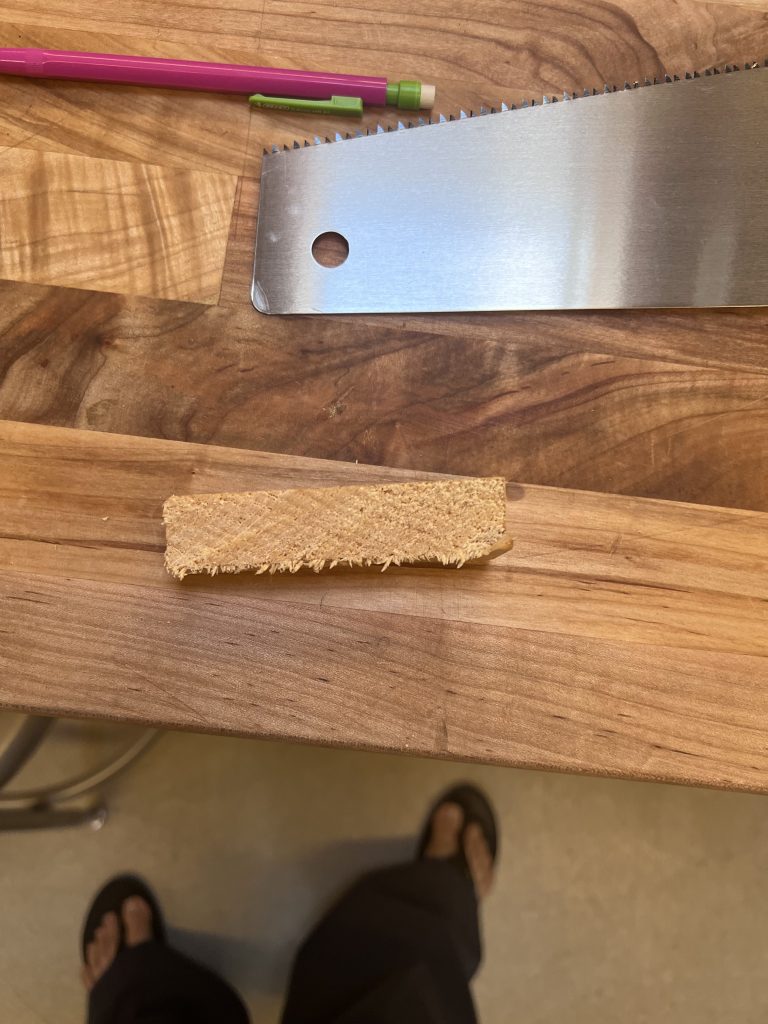
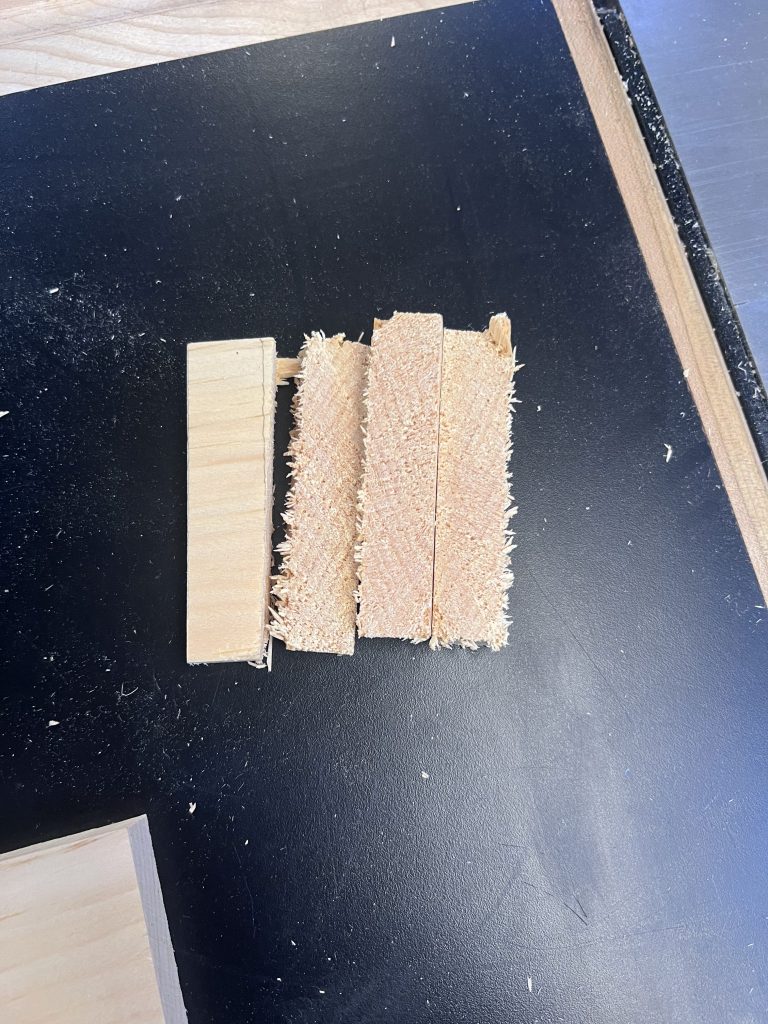
- Drilling holes into the planks:
- Now we will use the drilling machine to create 6 holes in the square plank for the screw later to add in and attaching the planks there. It will look something like this:
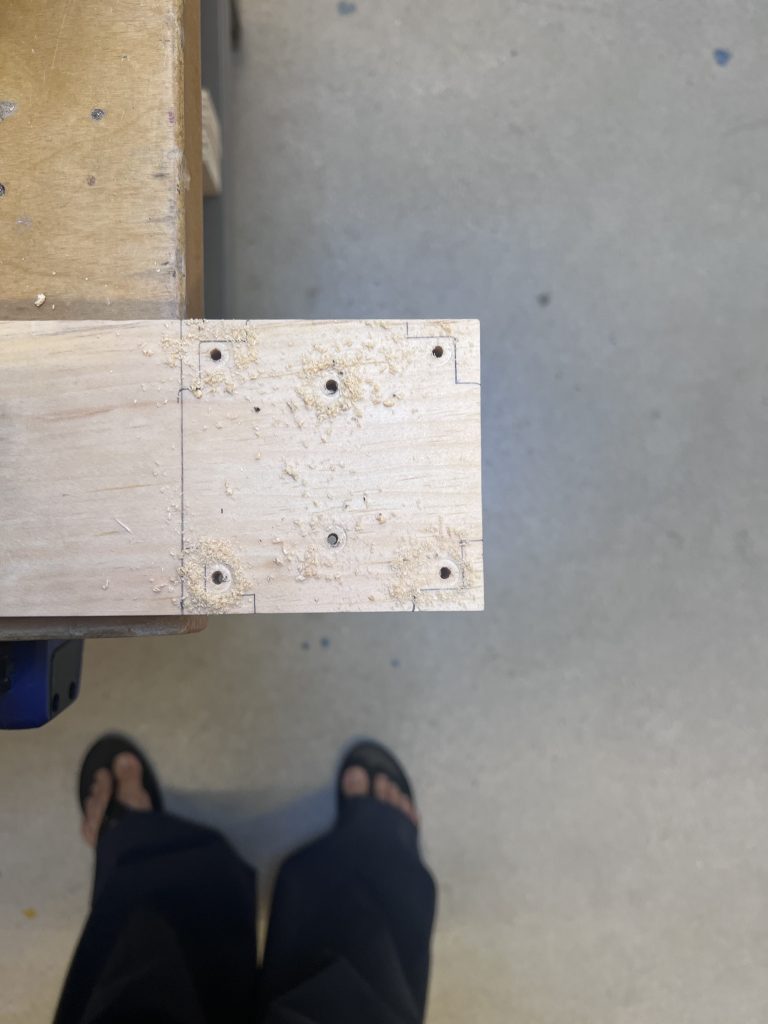
2. After taking care of the square plank, we will move on to drilling holes on one side of 4 pillar plank to attach the screws to the square plank.
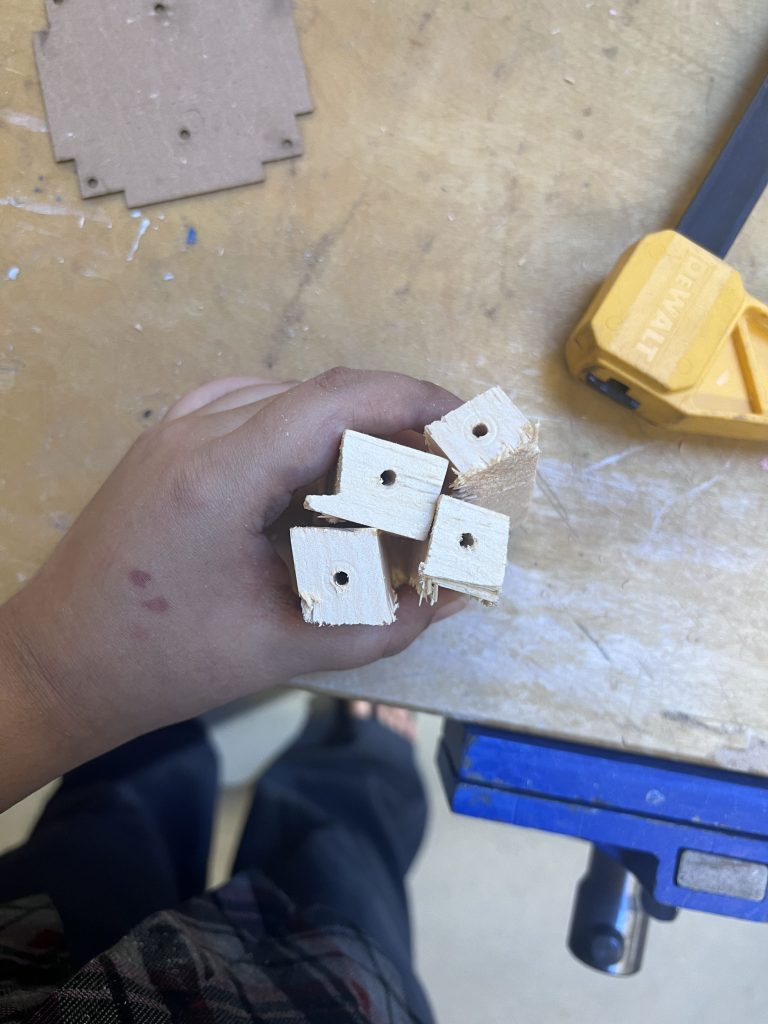
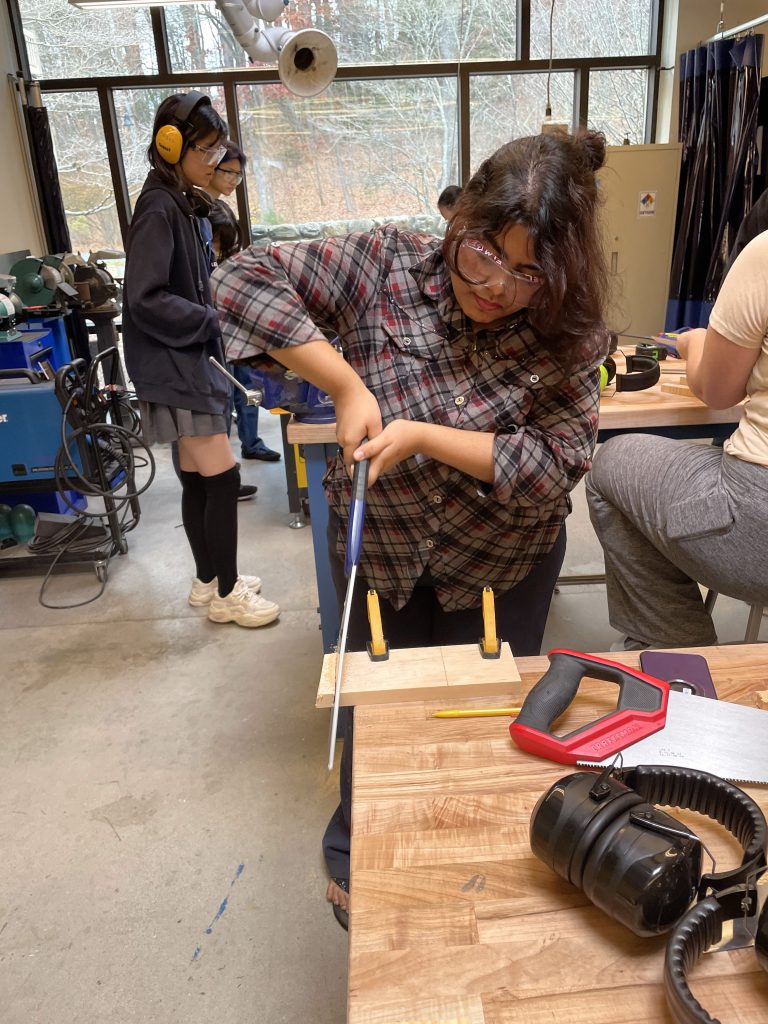
- Attaching the planks to the square plank:
1.Now that our planks are ready, we will attach them together and our message box will be almost ready. We will screw the nut and bolts through the square and will attach the planks there and our message box will be almost ready.
2.After that we will attach the CPX in the square plank and will wrap our message box with paper or design of our kind and our message box will be ready!
Reflection:
- Reflect back on the project and how it relates to the topic of belongingness (which often intersects with mindset, self-efficacy and active listening), using the prompts below. You can choose to write the reflection (1-2 paragraphs) or record it as video/audio (1-3 minutes).
- Did you have a strong sense of belongingness in the world of woodworking prior to this class?
- How did the experience in the Fimbel workshop impact your desire to engage in woodworking?
Before this project, I had little sense of belonging in the woodworking world. Woodworking felt like a distant craft, dominated by those with significant experience or natural skill, and I didn’t see myself as part of that group. I felt a mixture of excitement and intimidation when stepping into the Fimbel workshop for the first time, uncertain about whether I could match up to the precision and creativity that woodworking often demands. However, I entered the workshop with an open mind, ready to learn and listen to both the instructor and my peers.
Working on the message box was a transformative experience. The process of cutting, sanding, and assembling the planks taught me the value of patience, active listening, and attention to detail. While I made mistakes—misaligning a screw hole or struggling with the saw—I noticed how the collaborative and encouraging atmosphere in the workshop boosted my confidence. By the end of the project, I didn’t just see a completed wooden box with CPX functionality; I saw a reflection of my growing mindset and self-efficacy. This experience made woodworking feel approachable and even personal, and it sparked a newfound desire to explore more projects, proving to myself that I could indeed belong in this creative space.
2.Challenge yourself to step back and think about any parallels you can draw to your learning journey at large, using the prompts below. You can choose a written format (2-4 paragraphs) or recorded video/audio (2-5 minutes).
Have there been courses or co-curricular activities that you have embraced (or turned away from) because you felt a stronger (or weaker) sense of belongingness?
Looking back, did messages from the environment or space play a role?
If you were to revisit a decision to embrace or turn away from a course/activity, what would you tell your former self?
Belongingness has played a significant role in shaping my learning journey, influencing the courses and activities I chose to pursue—or hesitated to engage with. One moment that stands out was my decision to turn away from joining the debate club in grade seven. At the time, I doubted my ability to contribute meaningfully, especially after hearing peers suggest it might take away from my studies. Seeing others passionately engage in debates while I stood on the sidelines left me with a sense of regret. Yet, it also became a turning point that later fueled my commitment to public speaking and international competitions, where I found a sense of belonging I had initially denied myself.
Looking back, the environment and the messages I received played a significant role. The debate club appeared exclusive, almost intimidating, with seasoned members and structured teams. The lack of open encouragement made it harder for someone like me—already grappling with low self-efficacy—to feel welcomed. Similarly, societal pressures often whispered that I should focus on academics, reinforcing my hesitations. These external messages amplified my internal self-doubt, shaping my decision to turn away.
If I were to revisit that decision, I would tell my former self, “You don’t have to be perfect to belong.” I would remind myself that curiosity and effort, not perfection, are what open the door to growth. Joining the club, even as an unsure novice, would have been an opportunity to learn, grow, and find community. I’ve since learned that spaces and activities, no matter how intimidating, become more inclusive when we take the first step with an open heart. This reflection reminds me that belonging is often cultivated, not granted, and that mindset plays a crucial role in creating it.
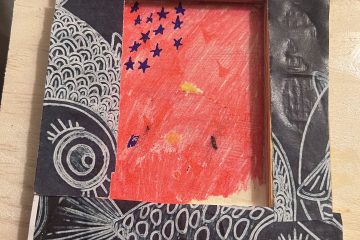
0 Comments